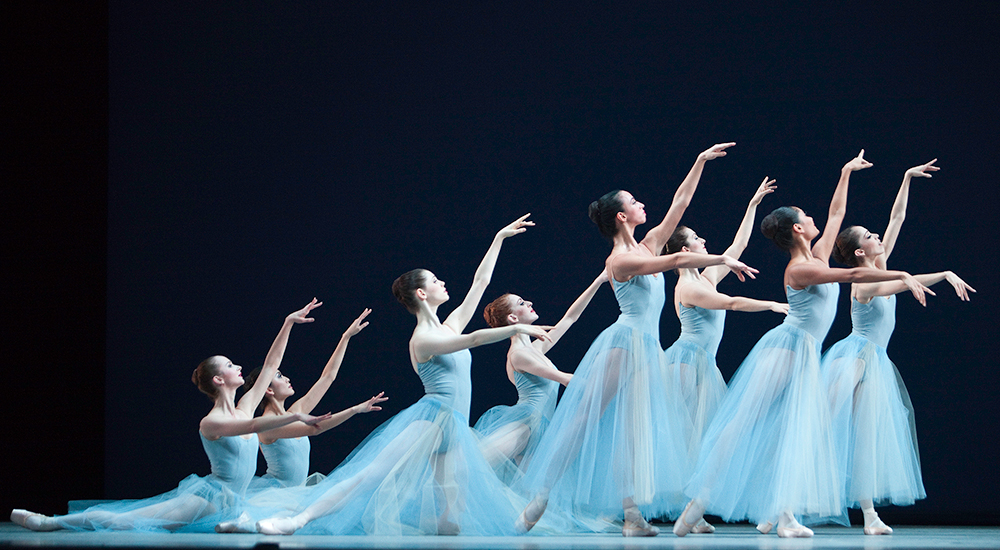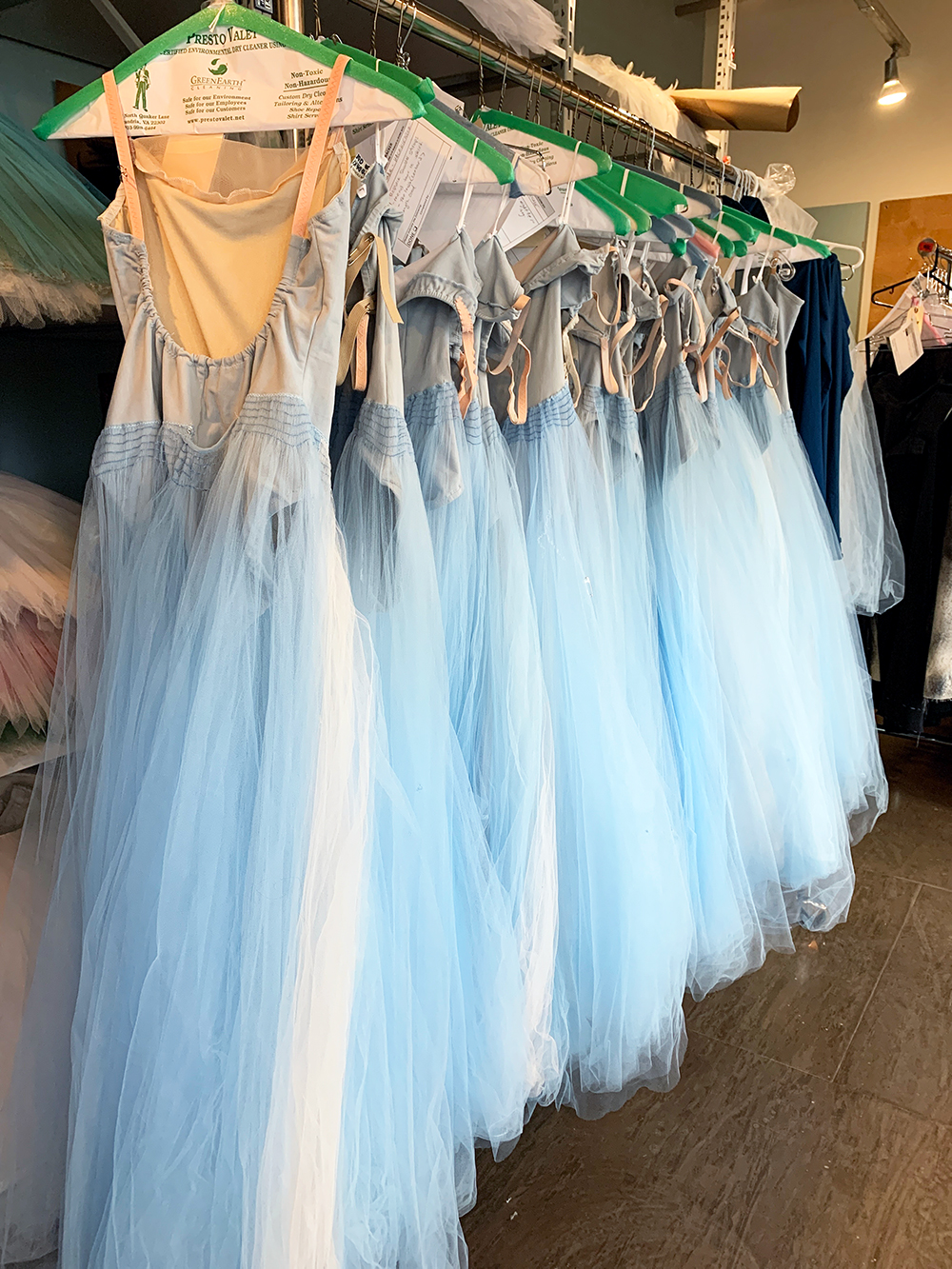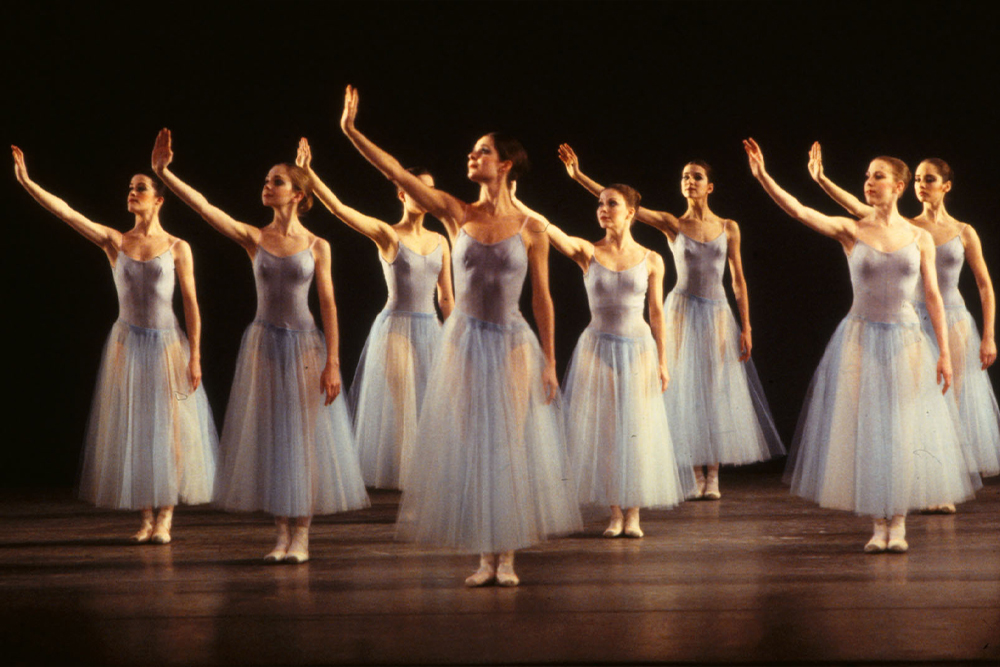Ballet
News+
A Vision in Blue: The Costumes for Serenade
by Caroline Dickie
October 26, 2021

Artists of the Ballet in Serenade. Photo by Cylla von Tiedemann.
The gauzy blue tutus in George Balanchine’s Serenade add so much to the mystery and romance of the ballet that it’s hard to believe they didn’t feature in the original work. Instead, they are part of an evolving history that saw Balanchine revisit Serenade over and over again as he developed his musical, abstract aesthetic with the company he founded, New York City Ballet.
The pale blue costumes are the creation of famed designer Barbara Karinska, who collaborated with Balanchine on over 75 ballets, including Jewels and Symphony in C, and who is credited with inventing the “Balanchine tutu” in a softer powder puff style. A designer with significant influence in stage and film, Karinska won an Academy Award in 1948 for costuming Ingrid Bergman in medieval dress for the film Joan of Arc.

Serenade costumes awaiting fittings.
Stacy Dimitropoulos, who is the Wardrobe Supervisor at The National Ballet of Canada, explains that the Serenade tutus are deceiving in their simplicity and have been meticulously designed to complement the dancers’ movements. “At first glance the tutus appear to be a simple leotard with a romantic tutu attached, but in fact they are constructed with very specific directions. The skirt placement on the leotard is attached on an angle and there are two sections of beige net in the skirt that are placed to line up with the dancer’s leg line. All of the subtleties in the costume are meant to work with the choreography to contribute the uniformity of length in the skirts.”
Karinska designed the costumes for Serenade in 1952, almost 20 years after the ballet premiered in 1934 as Balanchine’s first work in America and an exercise in performance for his senior students at the School of American Ballet. Several iterations of costumes existed prior, starting with tunic-style dresses and subsequent designs by Jean Lurçat and Candido Portinari. But Karinska’s pale blue tulle, which captures the ethereal sweep of Serenade so beautifully, has stayed.

Linda Maybarduk with Artists of the Ballet in Serenade (1980). Photo by Barry Gray.
The National Ballet first performed Serenade in 1962 and the costumes have been rebuilt twice based on Karinska’s designs, in 1980 and 2010. This year, the wardrobe team has built additional tutus and unitards to increase the company’s inventory ahead of the November performances. “We build an inventory of costumes that reflect the company members cast in a production,” says Dimitropoulos. “We assign costumes according to size, conduct fittings and then alterations occur to customize the fit for each dancer. Occasionally costumes are shared and the challenge is to find the happy medium of the fit that will work on more than one dancer.”
Balanchine recognized the significant role that costumes play in the performing arts and in Karinska he felt he’d discovered a kindred spirit, once saying “I attribute to her 50 percent of the success of my ballets that she has dressed.” Karinska was associated with New York City Ballet since its inception to the end of her career and from 1964 her costume shop was devoted exclusively to its work. Though she remained in-demand by all manner of theatre professionals, it was to New York City Ballet – and Balanchine – that she said, “I gave my heart.”
Learn About Serenade
